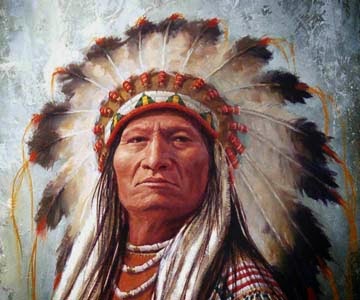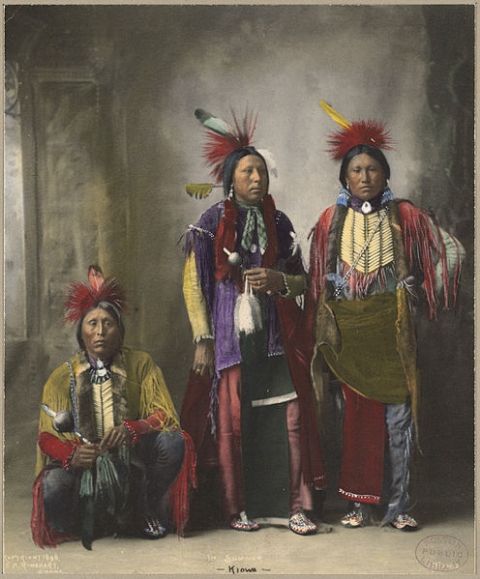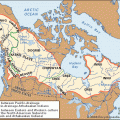
Five of the Southeastern Indian nations – Cherokee, Chickasaw, Choctaw, Creek, and Seminole – are sometimes called the “five Civilized Tribes”. The designation “civilized” is an indication that they had acquired many elements of European cultures and were the most acculturated Indian tribes during the nineteenth century. The Chickasaw, descendents of one of the Mississippian chiefdoms that dominated the region after 1000 CE, became a major power-player when the European invasion of the Southeast intensified in the late seventeenth and early eighteenth centuries. The traditional Chickasaw homeland was in northern Mississippi.
There is an oral tradition which says that the people emerged from the underworld at Ninih Waiya. The first to emerge were the Creek, who dried themselves in the sun and then went east. Next to emerge were the Cherokee, who tried to follow the Creek but got lost and settled in the north. The third group to emerge was the Chickasaw, who followed the Cherokee. The last group to emerge was the Choctaw, who settled near the mound.
Linguistically, the Chickasaw language is a part of the larger Muskogean family and is most closely related to Choctaw.
Like the other Indian nations of the Southeast, the Chickasaw were an agricultural people who raised corn, beans, squash, melons, and sunflowers. They farmed the fertile floodplains and located their villages on high grounds away from the annual flooding. Chickasaw houses, like those of other Indian nations in the region, used a pole and frame construction which could then be covered with bark or thatch.
Corn was the most important Chickasaw crop, so it is not surprising that he Green Corn Ceremony was their most important religious ceremony. Held after the harvest, the Green Corn Ceremony was an expression of gratitude for a successful corn crop. This was a time for renewing life when the villages were cleaned and worn pottery was broken. The Green Corn Ceremony was also associated with the quest for spiritual purity. Fasting – one of the principle ways of attaining purity – was an important element in the ceremony. Among the Chickasaw, the fast started on the first afternoon of the ceremony and lasted until the second sunrise. Following the fast an emetic was used to purge the body of all impurities.
The emetic used was the Black Drink, a black beverage which was made from the leaves of the cassina shrub. Drinking the beverage — a strong purgative — gave special purification to the drinker. It was used to cleanse the minds of village leaders for debate and to cleanse and strengthen the bodies of warriors for battle. By removing bodily impurities, the drinkers were restored to a state of equilibrium which allowed them to successfully complete whatever task they faced. Anthropologist Charles Hudson, in his book The Southeastern Indians, notes: “The physiological effects of black drink are mainly those of massive doses of caffeine.”
Fishing and hunting supplemented the agricultural diet. Fish were often speared using green cane spears which could be 16 to 18 feet in length. Spearing was often done from canoes.
Like many of the other Indian nations in the Southeast, the Chickasaw had a dual system of government in which there was a civil chief who managed internal matters and peaceful diplomacy and another chief served as war chief. During times of conflict, the war chief would function as the primary leader.
One of the interesting cultural practices of some of the Southeastern tribes, such as the Natchez, Chickasaw, Catawba, and Choctaw, was cranial deformation in which the heads of infants were deliberately flattened. Christina Snyder, in her book Slavery in Indian Country: The Changing Face of Captivity in Early America, reports: “When infants from these groups lay on their cradle boards, families placed wooden boards covered with deerskin on the foreheads, making the cranial vault rounded and long.”
Cranial deformation was usually an indication of high social rank.
Warfare was common among the Southeastern Indian nations. Even though there were women warriors, warfare tended to be dominated by men. Warfare generally involved raiding to obtain booty or captives. Among the Chickasaw a typical raiding party consisted of about 20 men led by a war leader who carried a medicine bundle. Chickasaw women would often accompany the men, providing them with both critiques and encouragements through song. As with other Southeastern tribes, if anything happened which could be interpreted as a bad omen the warriors returned home.



Leave a Reply